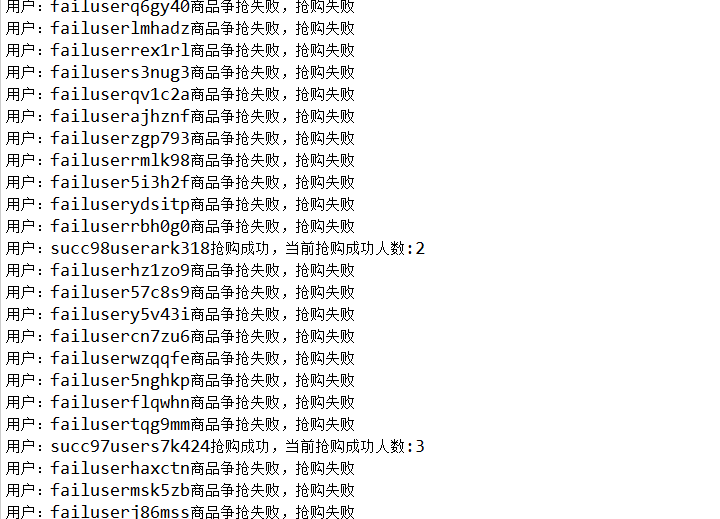I. Preface
Practice is the sole criterion for testing truth. It's shallow on paper. If you want to know a person, just rely on personal data, even if you meet and talk about one or two sentences, it will also produce a lot of contingent results. As the saying goes, adversity can see the truth. Of course, here is not to let you go to adversity, but to have a simple interaction with redis. Although the mechanism is not detailed, there will still be a general impression of what it looks like. If you don't say much, just raise your sleeve!
2. Specific operation
1. Open eclipse and build a new Maven project.
2. Import additional jar packages:
<! - redis Toolkit - >
<dependency>
<groupId>redis.clients</groupId>
<artifactId>jedis</artifactId>
<version>3.0.1</version>
</dependency>
3. Not much code, just two classes
(1)MyRedisTest.java
package com.spring.server.redis;
import java.util.Random;
import java.util.concurrent.ExecutorService;
import java.util.concurrent.Executors;
import redis.clients.jedis.Jedis;
public class MyRedisTest {
public static void main(String args[]){
final String watchKeys = "watchKeys";
ExecutorService executor = Executors.newFixedThreadPool(20);//Twenty thread pools are concurrent.
final Jedis jedis = new Jedis("127.0.0.1",6379);
System.out.println(jedis.get("myKey"));
jedis.set(watchKeys,"100");//Set the starting number of snaps.
jedis.close();
for(int i = 0; i < 1000; i++){//Set up 1000 people to launch a snap-up
executor.execute(new MyRunnable("user"+getRandomString(6)));
}
executor.shutdown();
}
private static String getRandomString(int length) {//Length is a random string length
String base = "abcdefghijklmnopqrstuvwxyz0123456789";
Random random = new Random();
StringBuffer sb = new StringBuffer();
for(int i = 0; i<length; i++){
//The purpose of this method is to generate a random int value, which is in the range of [0, n], i.e. the random int value between 0 and n, containing 0 but not n.
int number = random.nextInt(base.length());
//The charAt() method is used to return characters at the specified index. The index ranges from 0 to length() - 1.
sb.append(base.charAt(number));
}
return sb.toString();
}
}
(2)MyRunnable.java
package com.spring.server.redis;
import java.util.List;
import redis.clients.jedis.Jedis;
import redis.clients.jedis.Transaction;
public class MyRunnable implements Runnable {
String watchKeys = "watchKeys";//Monitoring keys
Jedis jedis = new Jedis("127.0.0.1",6379);
String userInfo;
public void myRunnable(){
}
public MyRunnable(String uinfo){
this.userInfo = uinfo;
}
@Override
public void run() {
try{
jedis.watch(watchKeys);
String val = jedis.get(watchKeys);
int valint = Integer.valueOf(val);
if(valint <= 100 && valint >=1){
Transaction tx = jedis.multi();//Open transaction
tx.incrBy("watchKeys",-1);
List<Object> list = tx.exec();//Submit the transaction and return null if watchKeys is changed at this time
if(list == null || list.size()==0){
String failuserifo = "fail"+userInfo;
String failinfo="User:" + failuserifo + "Commodity scramble fails, snap-up fails";
System.out.println(failinfo);
/* Business Logic of Buying Failure */
jedis.setnx(failuserifo, failinfo);
}else{
for(Object succ : list){
String succuserifo ="succ"+succ.toString() +userInfo ;
String succinfo="User:" + succuserifo + "Successful Buying, Number of Successful Buying at Present:"
+ (1-(valint-100));
System.out.println(succinfo);
/* Business Logic of Successful Buying */
jedis.setnx(succuserifo, succinfo);
}
}
}else{
String failuserifo = "kcfail" + userInfo;
String failinfo1="User:" + failuserifo + "Goods were snapped up and failed";
System.out.println(failinfo1);
jedis.setnx(failuserifo, failinfo1);
// Thread.sleep(500);
return;
}
}catch(Exception e){
e.printStackTrace();
}finally{
jedis.close();
}
}
}
4. Click Run

OK! Now that the interaction with redis is over, what do you gain?